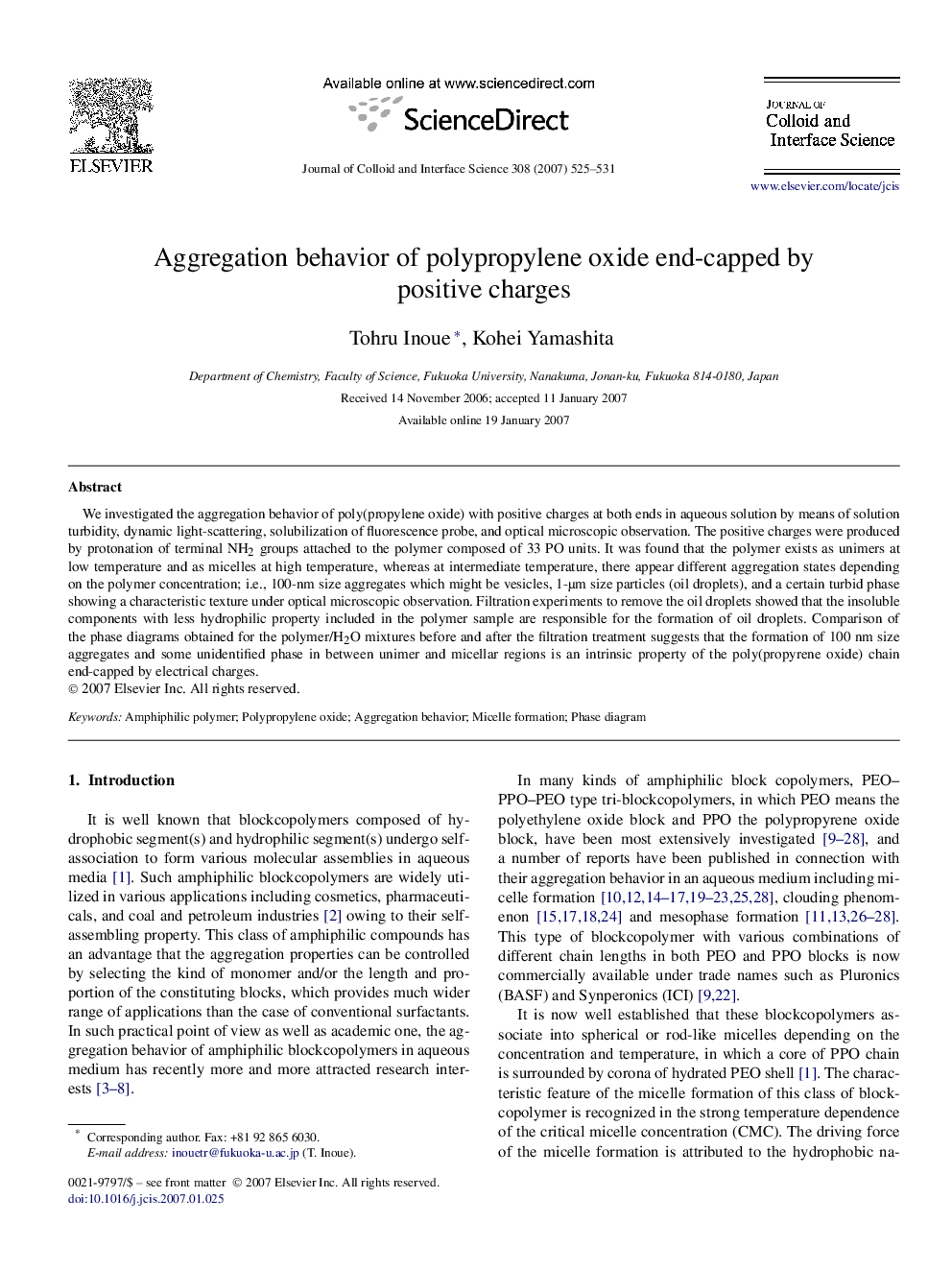| کد مقاله | کد نشریه | سال انتشار | مقاله انگلیسی | نسخه تمام متن |
|---|---|---|---|---|
| 613060 | 880713 | 2007 | 7 صفحه PDF | دانلود رایگان |

We investigated the aggregation behavior of poly(propylene oxide) with positive charges at both ends in aqueous solution by means of solution turbidity, dynamic light-scattering, solubilization of fluorescence probe, and optical microscopic observation. The positive charges were produced by protonation of terminal NH2 groups attached to the polymer composed of 33 PO units. It was found that the polymer exists as unimers at low temperature and as micelles at high temperature, whereas at intermediate temperature, there appear different aggregation states depending on the polymer concentration; i.e., 100-nm size aggregates which might be vesicles, 1-μm size particles (oil droplets), and a certain turbid phase showing a characteristic texture under optical microscopic observation. Filtration experiments to remove the oil droplets showed that the insoluble components with less hydrophilic property included in the polymer sample are responsible for the formation of oil droplets. Comparison of the phase diagrams obtained for the polymer/H2O mixtures before and after the filtration treatment suggests that the formation of 100 nm size aggregates and some unidentified phase in between unimer and micellar regions is an intrinsic property of the poly(propyrene oxide) chain end-capped by electrical charges.
In between unimer and micellar regions of the polymer, there appear 100-nm size aggregates which might be vesicles, 1-μm size oil droplets, and a certain turbid phase.Figure optionsDownload as PowerPoint slide
Journal: Journal of Colloid and Interface Science - Volume 308, Issue 2, 15 April 2007, Pages 525–531